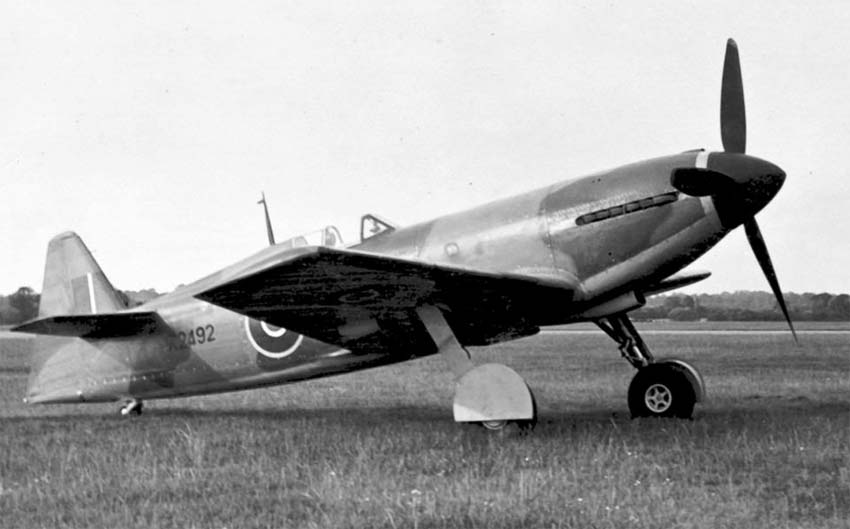Martin Baker MB3
Using lessons learned from the MB1 and MB2, James Martin and Captain Valentine Baker capitalised on the design and construction to develop a new design, the MB3, which was powered by a 2,000 hp Napier Sabre 24-cylinder, H-type engine, driving a de Havilland variable-pitch three-blade propeller. The MB3 was projected to meet an Air Ministry fighter specification. It was armed with six 20 millimetres (0.79 in) cannon mounted in the wings, each with 200 rounds of ammunition, which made it the most heavily armed fighter in existence; for ease of maintenance the armament was easily accessible. Three were ordered to specification F.18/39 which was written for the design.
While retaining the essential characteristics of the earlier designs, MB3 included many new features: the fuselage primary structure was still the round steel tube arrangement but metal panels had taken the place of wood and fabric of earlier models. The wing construction integrated torsion-box construction and a laminated steel spar, giving a strong and stiff structure with minimum flexing. Attention to detail extended to a Martin-designed pneumatically-controlled undercarriage that was simple, sturdy, effective and reliable. With the wing flaps also pneumatically operated, the need for hydraulics, with all their attendant operational hazards and maintenance problems, was eliminated. Underwing radiators had the coolant radiator on the starboard and the oil cooler on the port side.
During a series of test flights the MB3 was revealed to be highly manoeuvrable and easy to fly but on 12 September 1942, the engine failed soon after take-off and Captain Baker, to save the aircraft while executing a difficult forced landing, crashed in a field and was killed. This led to the cancellation of the programme.

Martin Baker MB3 
Martin Baker MB3 
Martin Baker MB3 
Martin Baker MB3 
Martin Baker MB3 
Martin Baker MB3 
Martin Baker MB3 
Martin Baker MB3 
Martin Baker MB3 
Martin Baker MB3 
Martin Baker MB3 
Martin Baker MB3 
Martin Baker MB3 
Martin Baker MB3 Undercarriage 
Martin Baker MB3 Under Construction 
Martin Baker MB3 Engine 
Martin Baker MB3 Engine Bearers 
Martin Baker MB3 Armament 
Martin Baker MB3 Attrib: Emoscopes via GNU Free Documentation License